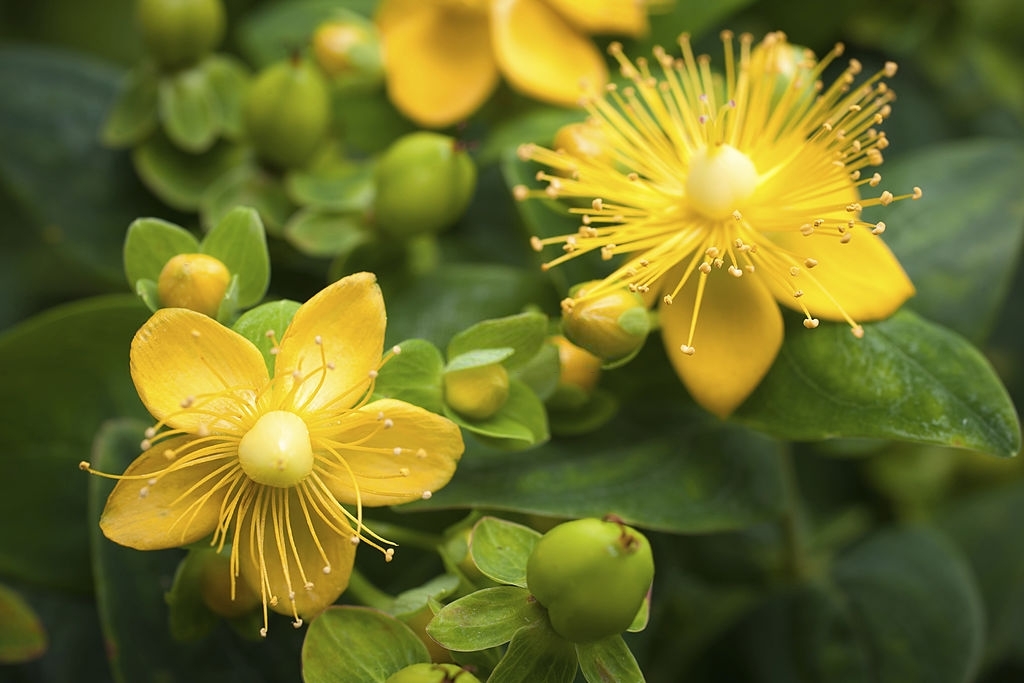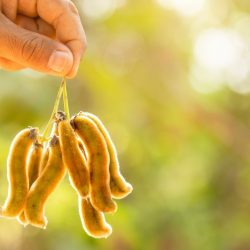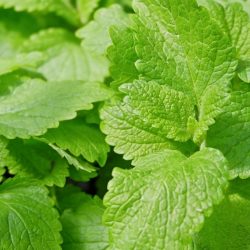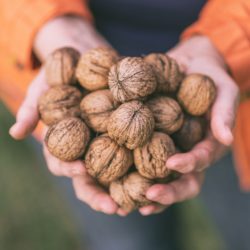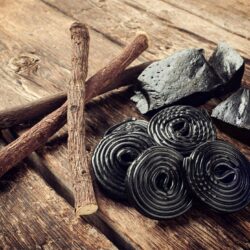The signature theory would demonstrate that St. John’s Wort, which blooms more particularly during the summer solstice , is a solar plant whose symbolism directs us directly to its propensity to know how to chase the heady pangs of depression . St. John’s Wort preserves evil spirits which, in our modern times, are all examples of the difficulties we can encounter as our own inner sun fades, inexorably turning into a pale and dull coin of money.
A little history
The history of St. John’s Wort dates back over 2,500 years. Cited among others by Pliny the Elder , Dioscorides , Theophrastus and Galen , for its healing and anti-neuralgic properties, it was known in the Middle Ages to treat melancholy. Considered a magical plant, it was used to drive out the spirit of darkness and exorcise “possessed” people, hence its Latin name Fuga dæmonum (“flee the demon”) which we find for one of its many vernacular names, “demon-hunter”.
In the countryside, the peasants hung a bouquet of St. John’s Wort at the doors of the barns. They probably thought that the herb of Saint John was acting on the demon. The least that can be said is that at this time mental problems and behavioral disorders were poorly understood, and deciphered according to the beliefs of the time and place. Any psychic anomaly or deviance was notably interpreted as being potentially linked to the intrusion of an external spirit, generally evil.
What are the main pharmacological properties of the flowering tops of St. John’s Wort?
Antidepressant properties:
These properties were first attributed to hypericin, but in reality the preparations which lack it are active, indicating that its activity is weak on the depressive component. However, by binding to the receptors for the neuropeptides Y1 and Y2, supposed to play a role in anxiety and depressive states , and by showing a sedative and melatoninergic action , hypericin would participate in the anxiolytic activity of St. John’s Wort. It appeared, moreover, that hyperforin was one of the major constituents involved in the antidepressant activity of the plant. The active ingredients in St. John’s Wort seem to act synergistically.
A 2014 literature review on hyperforin showed that in addition to its interesting antidepressant properties , the molecule potentially has great pharmacological interest. It is involved in the metabolism of the precursor of β-amyloid peptide (APP), preventing the amyloidogenic pathway by promoting the formation of the sAPP derivative. It indirectly inhibits the reuptake of neurotransmitters, and modulates their concentration in the synaptic space, while regulating the cellular concentrations of cations such as Na +, Ca2 + and Zn2 +. The TRPC6 channels and the mitochondria indeed seem to be two privileged targets of hyperforin which, at the level of the central nervous system, preferentially exerts its action on the adult cortex and not on the hippocampus.
Anxiolytic and hypnotic properties:
In vivo , the repeated administration of H. perforatum induces in particular an anxiolytic and antipanic effect , and exerts an antistress effect in the defensive mode. The plant decreases alcohol consumption in the dependent subject, and improves memory and learning .
Furthermore, St. John’s Wort exerts a sedative effect on the subject, and increases the duration of REM sleep in healthy volunteers.
Antioxidant and neuroprotective properties:
The standardized extracts of Hypericum perforatum indeed contain flavonoids known for their antioxidant properties . Their effect was evaluated in vitro on a model system for neuronal disorders, glutamate-induced cell death of hippocampal neurons, due to depletion of glutathione levels and increased intracellular reactive oxygen. St. John’s Wort also increases their survival, and protects these neurons from cell death induced by glutamate, by attenuating the flow of calcium in the cell and by modifying its energy status, which shows a neuronal cytoprotective effect .
In vivo , St. John’s Wort reduces the accumulation of the β-amyloid substance. It causes a moderate, but statistically significant, increase in the cerebrovascular P-glycoprotein involved in the export of the β-amyloid substance from the brain to the blood, which could constitute a new therapeutic strategy to protect the brain from the accumulation of this substance. last, and thus hamper the progression of Alzheimer’s disease .
Analgesic properties:
Preclinical studies also indicate a potential use of St. John’s Wort for the medical treatment of pain. In animals, low doses of dry extracts (0.3% hypericin, 3 to 5% hyperforin) also exert an antinociceptive effect , relieve acute and chronic hyperalgesic states and increase opioid analgesia. Clinical studies show an effectiveness on dental pain.
In vivo , St. John’s Wort further exerts significant antinociceptive activity in two models of neuropathic pain (induced by an antiretroviral and by oxaliplatin) and could be used for the relief of this type of pain, alone or in combination with morphine.
Topically topically (ointment), St. John’s Wort significantly reduces the intensity of perineal pain post-episiotomy, as shown in a 2018 randomized placebo-controlled trial.
Anti-inflammatory properties:
The hyperforin contained in St. John’s Wort is an anti-inflammatory agent . It inhibits, among other things, 5-lipoxygenase (5-LO) and cyclooxygenase-1 (COX-1), suggesting therapeutic potential in inflammatory and allergic diseases linked to eicosanoids.
In vivo , St. John’s Wort has anti-inflammatory activity comparable to indomethacin and analgesic activity comparable to pentazocine and aspirin. Moreover, it potentiates the pharmacological action of these molecules.
Other actions:
- Spasmolytic action, linked to flavonoids.
- Anti-vasoconstrictor activity similar to that of hawthorn, with improvement of coronary flow, linked to proanthocyanidins.
- Bacteriostatic, and bactericidal (hyperforin, flavonoids, phloroglucinol) in particular on Staphylococcus aureus . Hyperforin appears to be the main antibacterial agent. This activity is higher against Gram (+) bacteria than Gram (-) bacteria. Alcoholic extracts (methanol / ethanol) have a more pronounced activity than aqueous extracts.
- Antiviral moderate potential in vitro by direct action at membrane level and indirect on infected cells.
- Diuretic activity.
- Dose-dependent increase in temperature.
- Taking St. John’s Wort improves glucose tolerance in healthy subjects who ingest metformin, compared to metformin alone.
Are there any precautions for use with St. John’s Wort?
Contraindications:
- St. John’s Wort is contraindicated in pregnant or breastfeeding women, as well as in children or adolescents under 18 years of age.
- Contraindicated in people with bipolar disorder.
- In addition, moderate cirrhosis of the liver may increase the plasma levels of hypericin, pseudohypericin and hyperforin.
Precautions for use:
- Photosensitizer (by induction of singlet O2 formation). It is not recommended to expose yourself to the sun for a long time.
- Although St. John’s Wort is over the counter, it should always be used under medical supervision.
- The effectiveness of St. John’s Wort is therefore dose dependent. Its activity sets in gradually, and takes 10 to 14 days to produce its first effects. It does not induce habituation. St. John’s Wort is currently one of the most manageable antidepressants, combining efficacy and perfect tolerance. It does not alter psychomotor functions. Its plug is compatible with a professional life including driving.
Drugs interactions :
- Interactions with drugs “with low therapeutic margin”, in particular antiretrovirals (anti-HIV such as indinavir), digoxin, theophylline, anti-vitamin K, ciclosporin, oral contraceptives, antidepressants IRS, amitriptyline, cyclosporine, fexofenadine, indinavir, methadone, midazolam, nevirapine, phenprocoumon, simvastatin, tacrolimus and warfarin. These interactions are linked to an enzymatic induction of cytochrome P450 and an induction of the membrane P glycoprotein.
- Possible reduction of drug effect secondary to decreased plasma concentration, due to possible induction of CYP2C9, CYP3A4 and CYP1A2 isoenzyme, induction of CYP3A activity, with reduced efficacy treatment of drugs metabolized by CYP3A, other sources do not find any alteration in the activity of CYP2C9, CYP1A2, CYP2D6.
- Interactions with protease and transcriptase inhibitors, immunosuppressants ciclosporin and tacrolimus, irinotecan, imatinib, low-dose hormonal contraceptives, serotonergic antidepressants by induction of cytochrome P450 CYP3A4 (hyperforin) and P-glycoprotein (hypericin).
- Suddenly stopping the intake of St. John’s Wort may therefore also lead to an increase in the plasma concentration of these drugs.
- St. John’s Wort gradually and powerfully induces the activity of CYP3A4, the elimination of ethinylestradiol, a major substrate of CYP3A4, will be greatly accelerated in the presence of St. John’s Wort, therefore, the contraceptive effect will no longer be assured and it will be necessary to provide another method of contraception.
- In 2014, the British Medicines and Healthcare Products Regulatory Agency (MHRA) issued an alert on the risk of interaction between St. John’s Wort and hormonal contraceptives based on progesterone, combined microdose pills and etonogestrel implants. : 19 suspicious interactions were reported between 2000 and 2014, including 15 unintended pregnancies.
How to take St. John’s Wort and in what dosage?
Dry form:
- As a food supplement, in the form of a dry extract or standardized in capsules.
Liquid form:
- Standardized fluid extract of fresh plant : 5 to 10 ml per day in a glass of water, preferably in the morning.
- Full suspension of fresh plant : 5 ml 1 to 3 times a day in water.
- Hydroalcoholic extract : 20 to 25 drops 3 times a day in a glass of water.
- Infusion : 2 tbsp. coffee per cup, 2 to 3 times a day.
Medical bibliographic sources and clinical trials :
-
Linde K., St. John’s wort. An overview, Forsh Komplementmed., 2009
-
Laakmann G. et al., St John’s wort in mild ti moderate depression ; the relevance of hyperforin for the clinical efficacy, Pharmacopsychiatry, 1998
-
Bennet D.A. Jr et al., Neuropharmacology of St. John’s Wort (Hypericum)., Ann Pharmacother., 1998
-
Barnes J. et al., St John’s wort (Hypericum perforatum L.) ; a review of its chemistry, pharmacology and clinical properties, J Pham Pharmacol., 2001
-
Coleta M. et al., Comparative evaluation of Melissa officinalis L., Tilia europaea L. Passiflora edulis Sims. and Hypericum perforatum L. in the elevated plus maze anxiety test; Pharmacopsychiatry, 2001
-
Butterweck V., Mechanism of action of St John’s wort in depression : what is known car, CNS Drugs, 2003
-
Kumar V. et al., Anti-inflammatory and analgesic activity of Indian J Exp Biol., 2001
-
Saddiqe Z. et al., A review of the antibacterial activity of Hypericum perforatum L., Journal of Ethnopharmacology, 2010
-
Soleymani S. et al., Clinical risks of St John’s Wort (Hypericum perforatum) co-administration, Expert opin Drug Metab Toxicol., 2017
-
Albert D., Zundorf I., Dingermann T. et al., Hyperforin is adual inhibitor of cyclooxygenase-1 and 5-lipoxygenase, Biochem Pharmacol, 2002
-
Galeotti N. et al., Hypericum perforatum (St John’s wort) beyond depression : A therapeutic perspective for pain conditions, J Ethnopharmacol., 2017
-
Stage T.B. et al. Intake of St John’s wort improves the glucose tolerance in healty subjects who ingest metformin compared with metformin alone; Br J Clin Pharmacol., 2015
-
Breyer A. et al., Glutamate-induced cell death in neuronal HT22 cells is attenuated by extracts from St. John’s wort (hypericum L.), Phytomedicine, 2007
-
Neary J.T. et al., Biochemical Mechanisms of Action of Hypericum LI 160 In Glial and Neuronal Cells ; Inhibition Of Neurotransmiter Uptake and Stimulation of Extracellular Signal Regulated Protein Kinase, Pharmacopsychiatry, 2001
-
Vakili F. et al., Impact of Hypericum perforatum ointment on Perineal Pain Intensity Folloxing Episiotomy ; a Randomized Placebo Controlled Trial, J Car ing Sci., 2018

